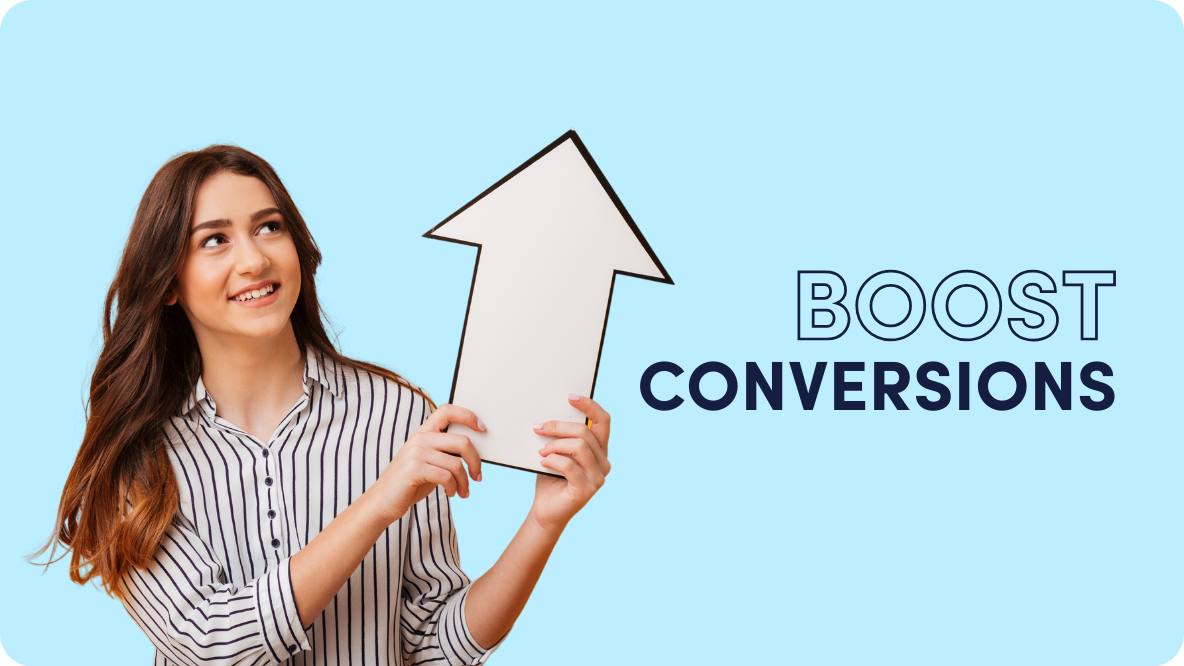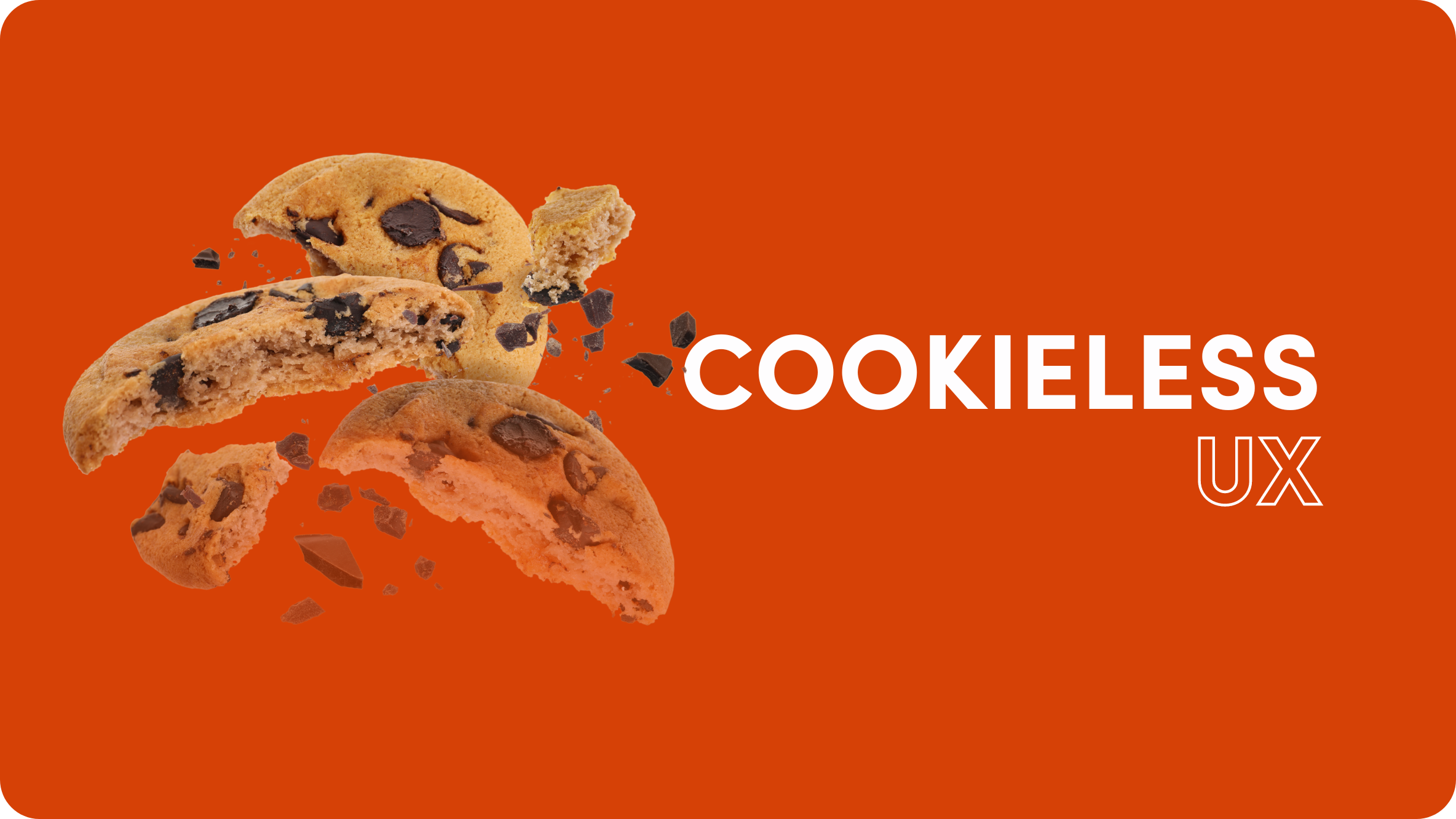9 Ways to Increase Conversion Rates on Your Website
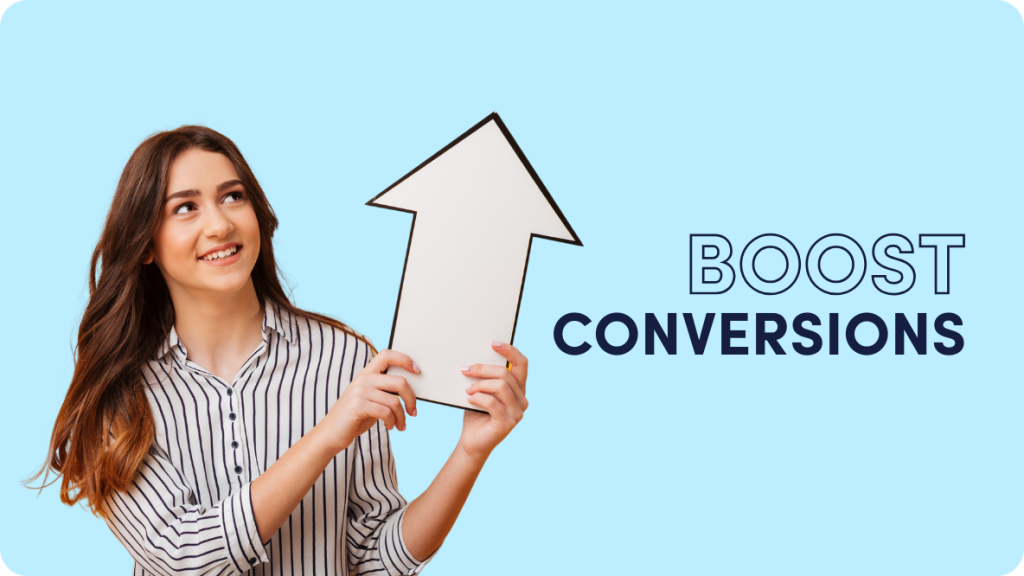
Driving traffic to your website is one of the challenges that marketers face, but in fact, it is just the beginning. The true measure of success lies in whether your website converts those visitors into customers. Unfortunately, the odds are not in a marketer’s favor. Although it varies per industry, the global average website conversion rate is just 3.68%. A conversion rate over 5% is not easy to achieve and is something to be proud of.
On the flip side, that means there is always room for improvement and growth! Although aiming for a 20, 50, or 80% conversion rate is not realistic, there are things you can do to increase conversion rates to impressive levels. And make no mistake, for some marketers, even just a slight increase in CVR can mean a significant jump in revenue.
Let’s explore the logic behind conversion rates and how you can work towards increasing conversions on your website.
Understanding Conversion Rate
First, let’s begin with a definition of Conversion Rate (CVR) :
CVR is a digital marketing metric that denotes the percentage of website visitors who ‘convert’ by taking a desired action, such as making a purchase, filling out an online form, or subscribing to a newsletter.
In other words, conversion rate is a relative measure of how many people visited a website or landing page versus the number of those who visited and also completed the call to action (CTA).
The type of conversion varies depending on the goal of the webpage. For e-commerce stores, conversions are defined as purchases. When a shopper clicks “Buy Now” and completes the transaction, this is counted as a conversion. On the other hand, an insurance agency may define a conversion as when a website visitor completes an online form with their contact details requesting a consultation call.
Conversions may differ within a website too. Different pages on the same website often have different conversion goals. For instance, a conversion on a product page is usually a purchase, while a conversion on a blog page may be when a visitor subscribes to the online newsletter.
A clear understanding of your business’s current conversion rates is the first step toward improving it.
Calculate your current conversion rate with this simple formula:
Conversion rate = Total conversions / Total views
For example, if 500 people visit a landing page and 20 visitors convert, your conversion rate will be:
20/500 = 0.04 or 4%.
Use this as your baseline, then you can start strategizing your conversion rate optimization (CRO) process to get even better results.
9 Ways to Boost CVR
Now that you are clear on what conversion rate is and how to set your baseline, let’s explore several ways that you can improve your CVR. These will take time and some trial and error, but the sooner you start, the sooner you can get more conversions.
1. Conduct a conversion audit
An audit is the first key step in improving conversion rates. Conversion auditing helps you pinpoint elements on your web page that you should optimize to see immediate improvement. The idea is to find potential barriers to conversion and fix them right away.
A site-wide audit should focus on three major variables:
- User experience: Does the website flow, is it easy to navigate, does it encourage engagement and conversion?
- Sales funnel: Is your checkout flow simple and easy to complete? Do other parts of the website and its content support and encourage the conversion process?
- User behavior: Where are most visitors converting on the website? Which CTA buttons do they tend to use most? What is the journey that visitors take on the website that leads them to convert?
A conversion audit should help you to find those easy wins. For example, if a landing page is missing a CTA above the fold then this can lead to leakage of potential conversions. Adding a prominent CTA so visitors see it straight away can help boost CVR.
Try to identify friction in the user experience and customer journey on the website that restricts potential customers from taking the desired action and moving to the conversion stage.
Here’s a list of tools that can help you do conversion audit like a pro:
- Google Analytics: Understand user behavior and sales funnel leakages.
- Heatmap tool: Monitor user behavior and identify the strong and weak areas on web pages.
- Session recording and usability testing tools: Find and fix UX bugs to improve the user experience on your website.
- Feedback from site visitors: Use surveys and feedback forms to help understand user behavior and impediments to conversion.
2. Optimize your website design
It only takes a fraction of a second for a visitor to gain an impression of your website. This crucial first impression will have a big impact on whether they will stay on the page or bounce. A poorly designed website will naturally have a poor conversion rate as a major chunk of visitors will simply leave straight away, without even having a chance of converting.
If you do manage to impress them and they decide to stay, the experience they have with your website design and layout as they explore further will also play a big role in your conversion rate.
Website design optimization doesn’t necessarily mean your site has to be sophisticated or fancy. All that glitters is not gold! Rather, focus on a design that supports conversions. Above all else, your website must have a conversion-driven design.
Here’s how to do it:
- Keep it simple, clean, and intuitive.
- Be mobile responsive. Most people use their mobile devices to browse online, so your site should work seamlessly across all devices.
- Make sure CTAs are prominent and compelling.
- Use visual cues to point visitors to important elements on the page.
- Smart use of whitespace will help direct attention to CTAs.
- Improve website navigation and structure to ensure visitors can find their way easily.
- Design navigation, menus, and interlinks in a way that supports and guides visitors to move through the conversion funnel.
- Add relevant, catchy images to keep visitors hooked.
Check out the landing page for an e-book by Outbrain. The bold title, accessible form, and orange CTA help to deliver low bounce rates and good conversion rates:
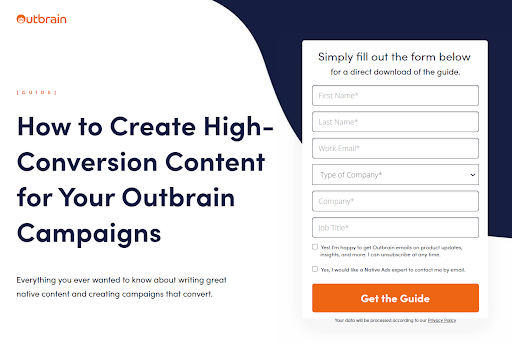
3. Craft persuasive copy
Design helps you hook visitors visually, and your website copy helps to complete the job. Good design with bad copy won’t take you too far.
Once visitors have been drawn to your website and decide to stay, the copy, both headlines and secondary text, is how to get your message across. If you get it right, you can significantly increase conversion rates with copy.
Persuasive copy always starts with the title, which is the largest and most standout element of the page. A good headline will explain to the visitor what the website is about and how it can help them, but it also piques curiosity and persuades them to read further. A good technique for web copy that converts is through storytelling.
Storytelling creates a narrative around your business and helps readers connect with the message. Copy that tells a story will improve comprehension and make the website experience memorable, all of which help to increase conversion rates.
To create compelling copy, you must first get to know your audience. Who is your ideal customer? What are their pain points, challenges, hobbies, and interests? How can your business or product add value to their lives? Developing buyer personas is the best way to understand your customers and figure out how to write copy that will encourage them to convert.
Check out this case study, which describes how the Getuplift agency helped the POWERUP Toys company increase their conversions by 96% by incorporating storytelling in their copy.
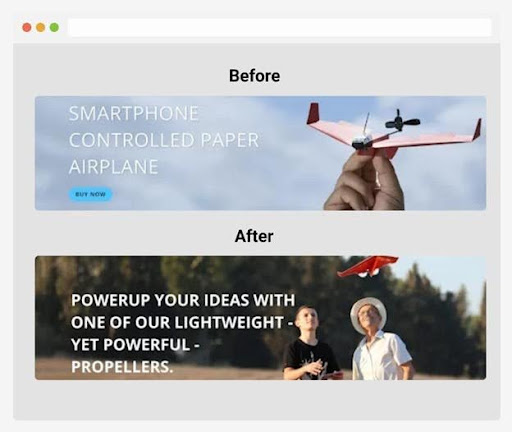
4. Implement A/B testing
It’s hard to increase conversion rates if you don’t know exactly what needs fixing on your website. Experimenting with A/B testing is the best way to get a clear-cut, data-driven picture of the performance of the elements on your website pages.
With A/B testing, website traffic is split between two versions of a web page, where each version has a different element. By monitoring conversions on both versions of the page, you can find out which works best with the audience. For example, craft two different headings for a web page and A/B test them on a split audience. The variation that converts better is chosen and can be tweaked and tested in another A/B test to try and drive even more conversions.
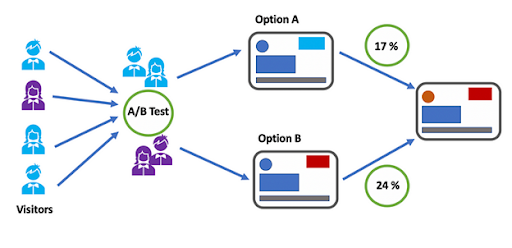
A/B testing is a systematic and scientific method to increase conversion rates, so you can rely on proven data of what works, rather than just relying on your gut feeling. For example, you might assume that comparing your product with competitors’ products on your landing page is not a good idea. After all, won’t that just be promoting the competition and taking the focus off of your product? By conducting an A/B test, you’ll get a definitive answer. Test two versions of the landing page where one version mentions the competition and the other doesn’t. Who knows, perhaps seeing the products side by side will be more convincing to the customer, rather than less? As noted in this study, a comparative mindset is more likely to increase purchase intention. But if you don’t A/B test it, you will never know for sure!
If you want to continuously improve CVR, then you need to be running A/B tests all the time. Test all the major elements on your web pages such as CTAs, copy, headlines, images, whitespace, colors, and anything else that may impact conversions.
5. Leverage social proof
Way before the era of social media, it was well-known that people tend to change their behavior because of social conformity. Famous research by Solomon Asch in the 1950s confirmed this, and similar results were revealed decades later by Alex Laskey, who found that when people don’t know how to behave in a certain situation, they copy others.
Experiments like these demonstrate the effectiveness of ‘social proof’ and why it is a key strategy to increase conversion rates online. When people see that others have enjoyed or benefitted from a product or service, they are far more likely to pay attention and convert. Adding customer reviews, testimonials, and other forms of social proof on a landing page or product page persuades visitors to take the same action as others have – which all leads to better conversion rates.
There are multiple ways you can use social proof to boost conversions:
- Customer reviews, testimonials, and star ratings on product pages.
- Expert endorsements or recommendations by industry leaders or influencers.
- Industry certifications and award badges establish your authority and trustworthiness.
- User-generated content from customers, such as social media posts, videos of people using your product, and more.
- Recommendations from friends and family, including referral programs or social sharing.
For example, The Wellness Company offers social proof for all their health supplements and products, with an amalgamated star rating at the top of the product page, and full customer reviews and ratings at the bottom of the page:
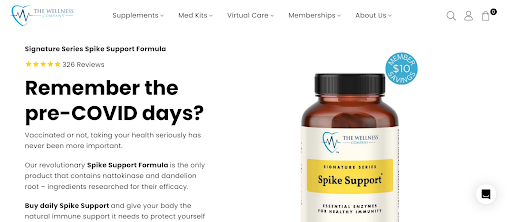
6. Offer incentives
One of the best ways to generate conversions is by offering incentives to your ideal customers. Think of exclusive offers they can’t resist.
You can use two types of incentives to boost conversions:
- Monetary incentives like immediate instant discounts, free shipping, or a free trial. Use exit intent tactics to trigger a popup message offering an instant discount when a visitor is about to leave your site without converting.
- Non-monetary incentives are also often very effective, such as access to exclusive content or products.
The incentive you offer should be of high value to your target audience. An incentive won’t work if the target market is not interested in it. Clearly communicate the value proposition to website visitors that explains why it is the best offer.
Follow these best practices to make your incentives more compelling for visitors:
- Use urgency and scarcity tactics to boost the conversion rate (ie. “Limited time”, “Last few left”).
- Clearly describe the benefits of the incentive and what makes it unique.
- Monetary incentives that provide instant value work best, such as free shipping.
- Clearly guide visitors as to what action they have to take to get the incentive (ie. “Enter the promo code”, “Buy today to unlock discount”).
The Wellness Company does it again with a neat and effective incentive for their virtual medical consultation service. As soon as you land on the page, you can see that top-tier members get virtual sessions for free, while club members get a discount compared to non-club members. The incentive to become a top-tier member is high!
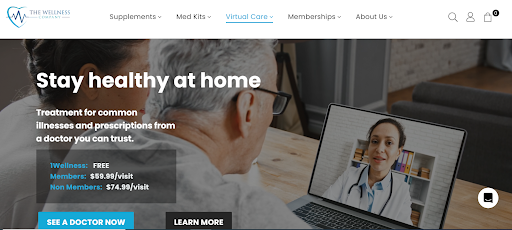
7. Streamline the checkout process
When the conversion you are aiming for is an online purchase, then having a streamlined and optimized checkout process from end-to-end is essential. There are several reasons why customers may drop off before completing the checkout process and fail to convert, such as additional costs that come up during checkout, forcing the buyer to create an account rather than simply enabling one-time purchasing, and a complex checkout process, among others:
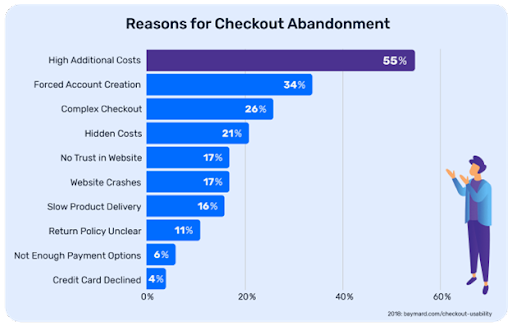
The checkout process has to be much more than simple. It needs to be responsive, single-page, frictionless, and with minimal form fields. Something as minor as a form field has a huge impact on conversion rate.
Research shows that removing a single form field can increase the conversion rate by 50%. Removing unnecessary checkout form fields is the first thing you should do. If you don’t absolutely need the information from the customer, don’t ask for it.
Generally, visitors don’t like spending time filling out long forms and creating an account to complete a purchase. They want a smooth, quick, and frictionless process. This is why guest checkout is known to increase conversions by 45%.
Some 17% of people abandon your website at the checkout page due to a lack of trust. That’s something you can address by adding security and trust badges like secure checkout, guaranteed safety, accepted payment trust badges, third-party endorsements, and return badges.
For sales-oriented conversion, your checkout process has to be top-notch and one of the most optimized pages on your website – no less than that will do.
8. Invest in remarketing
Website visitors generally don’t convert immediately. Studies show that as many as 97% of people don’t convert on the first visit and leave the site without buying.
Most of your potential customers need more than one interaction before the conversion stage. That’s why you need to do remarketing – engaging past visitors on your site with ads that convince them to return, thereby reintroducing the possibility of conversion.
Remarketing does the best job of increasing conversion rates at an affordable cost. With remarketing (also known as retargeting), you can target people who showed previous interest in your website with personalized, targeted ads that help to bring them back.
Remarketing campaigns can be run on paid search channels, native advertising networks, social media platforms, and email marketing platforms too. Take a look at this example of a remarketing email that reminds the customer that they didn’t complete a transaction and encourages them to go back to the cart and buy:
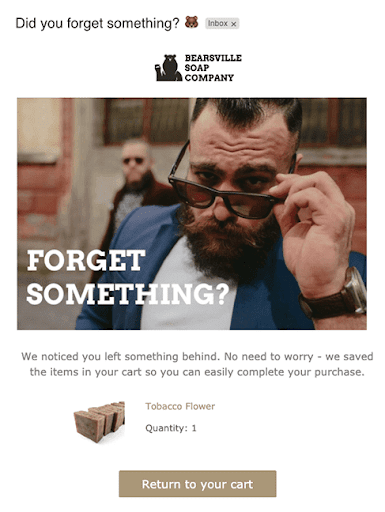
9. Monitor, analyze, optimize
Having an analytics tool is one thing. Using it properly for decision-making is another.
Improving conversion rates can only be effective if you monitor and analyze the conversion funnel and take proactive measures to fix bugs and optimize each stage.
Refer back to the baseline conversion rate and see where you stand. Have conversions increased or decreased in the last month? How well are you doing in your industry? Is there a specific funnel stage that has a higher-than-average drop-off?
The first step is having the necessary tools in place to track conversions. You can use a free tool like Google Analytics to monitor and track conversions on web pages, and you can supplement with an advanced tool like Kissmetrics to monitor event analytics and user behaviors.
With a monitoring and optimization system in place, it becomes possible to track, compare, and improve conversion rates whenever you want.
The Value of CRO Cannot be Overstated
Conversion rate optimization is a critical element in the digital marketing toolbox. When you realize its true value, there is no turning back.
By optimizing and increasing conversion rates, you can generate more revenue with the same marketing budget. Depending on your traffic, even a 1% increase in conversion rate can significantly improve the bottom-line results of your online campaigns.
Mastering the techniques to increase conversion rate should be the aim of every digital marketer, so get started today!
